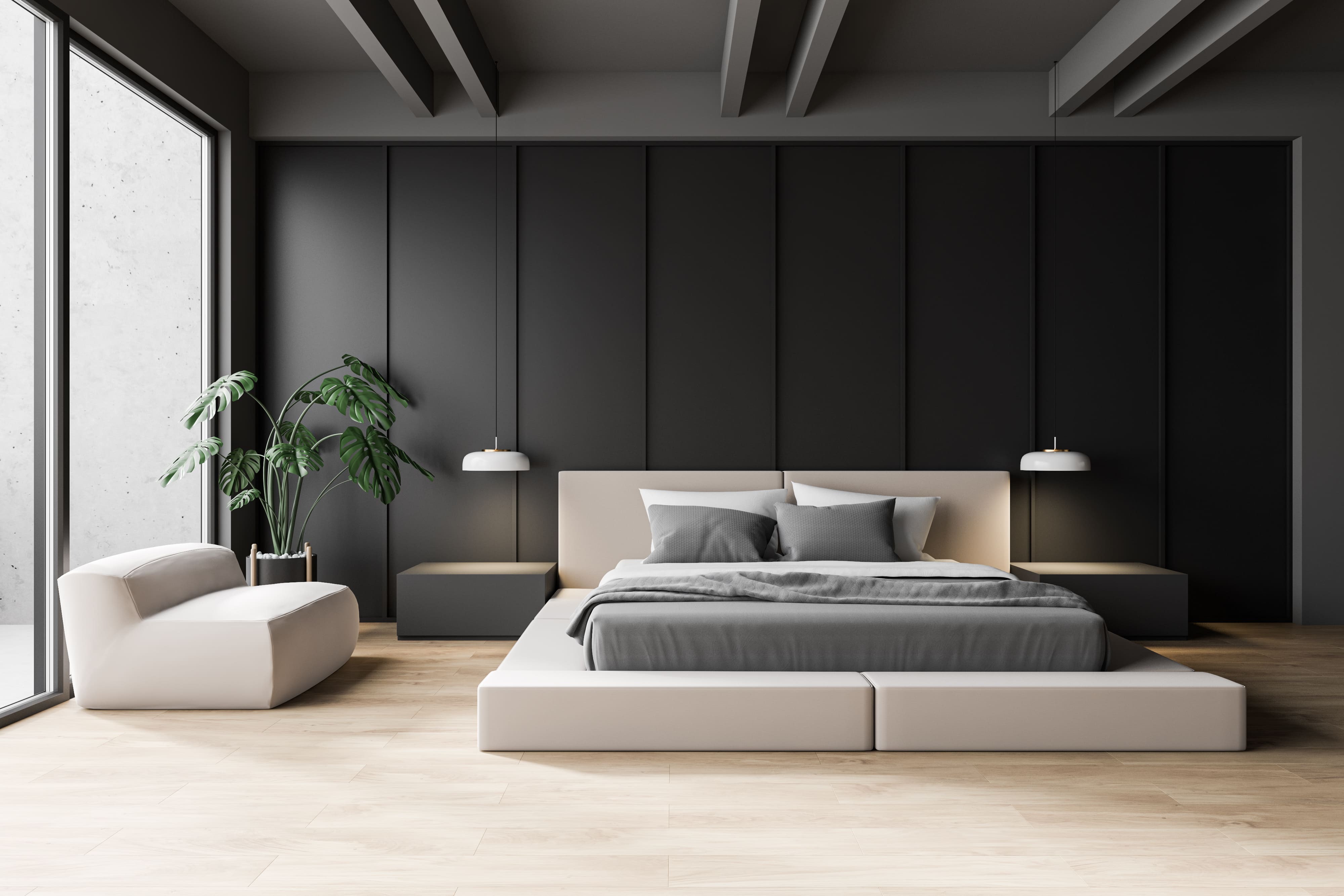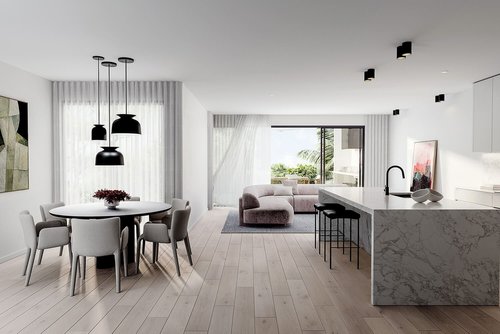What Are the current Trends in Interior Layout That Can Elevate Your Home?
In the ever-evolving realm of indoor layout, a convergence of sustainability, capability, and customization is forming contemporary spaces. Property owners are significantly being attracted towards eco-friendly products and biophilic components that not only enhance looks however additionally promote health. The stress in between maximalism and minimalism enables for varied expressions of style, catering to private preferences. As the demand for multi-functional spaces rises, cutting-edge solutions arise to address contemporary living difficulties. Discovering these trends exposes how they can change your home into a representation of both personal taste and functional demands, welcoming a closer assessment of what genuinely boosts a home.
Sustainable Design Practices
Lasting layout methods have actually become a cornerstone of contemporary interior decoration, reflecting a growing understanding of environmental influence. These methods focus on making use of environment-friendly materials, energy-efficient systems, and waste reduction strategies, intending to produce insides that are not only cosmetically pleasing but also environmentally responsible.
One key aspect of lasting design is the selection of products. Developers progressively favor recovered timber, recycled steels, and low-VOC (volatile organic substances) paints, which lessen harmful emissions and promote much healthier indoor air quality. Furthermore, the incorporation of all-natural light via calculated home window placements minimizes dependence on synthetic illumination, thus preserving energy.
One more crucial aspect is the application of efficient heating, cooling, and water supply. Making use of clever innovation can optimize energy usage, while rain harvesting systems add to lasting water monitoring. Additionally, furnishings and decoration are frequently sourced from regional artisans, further lowering the carbon footprint associated with transport.
Inevitably, lasting design methods not just enhance the performance and longevity of spaces however likewise promote a deeper link to the setting (Interior designer Miami). As customers come to be increasingly conscientious, these techniques will likely remain to form the future of interior decoration, producing areas that resonate with both beauty and sustainability
Strong Shade Combinations
Vibrant shade schemes have actually ended up being a specifying pattern in interior decoration, enabling spaces to make striking declarations and reflect individual style. The use of lively shades can transform an or else normal space right into an exciting setting. Designers are progressively embracing rich gem tones, saturated primaries, and unexpected color mixes to develop a sense of dramatization and vibrancy.
Integrating vibrant colors can be achieved through various elements, consisting of walls, furnishings, and devices. For circumstances, an accent wall repainted in a deep emerald green or a striking cobalt blue can act as a centerpiece, while vivid furniture or art work can infuse power into the room. Layering different shades within the same shade family members adds deepness and rate of interest, improving the overall visual.

In addition, using contrasting shades can invigorate an area, accentuating building attributes and layout aspects. This approach encourages house owners to reveal their originality and accept creative thinking in their indoor areas. As fads evolve, strong color schemes stand out as a powerful ways of individual expression, enabling home owners to curate atmospheres that reverberate with their unique tastes and lifestyles.
Maximalism Vs. Minimalism
Exactly how do personal choices affect the recurring dispute in between maximalism and minimalism in indoor design? Minimalism, characterized by tidy lines, neutral palettes, and functional home furnishings, allures to those looking for simpleness and peace.
On the other hand, maximalism accepts enthusiasm with strong shades, eclectic patterns, and a wealth of style. This design encourages personal narration, permitting home owners to showcase their one-of-a-kind collections and interests. Maximalism welcomes imagination and self-expression, making it an appealing choice for those that prosper on aesthetic excitement and variety in their surroundings.
The debate between maximalism and minimalism eventually depends upon personal taste and way of living. While minimalism might resonate with those that prefer a serene, orderly area, maximalism appeals to people who commemorate originality and richness in layout. Understanding one's choices can guide property owners in producing rooms that reflect their go now identities while straightening with contemporary fads in interior decoration.
Multi-Functional Areas

The layout of these rooms frequently includes ingenious furniture services, such as sleeper sofa, extendable eating tables, and modular shelving, which can adjust to various features throughout the day. For example, a living-room can seamlessly transition right into a home workplace or a visitor room, maximizing energy without sacrificing style.
Moreover, the integration of modern technology plays a crucial function in boosting multi-functionality. Smart home gadgets can streamline operations, allowing home owners to manage lighting, temperature, and also security easily, thereby creating a more adaptable living atmosphere.
Along with usefulness, the aesthetic allure of multi-functional spaces can be attained through thoughtful design options. Open layout, natural color combinations, and tactical zoning with rugs or furniture can delineate locations while ensuring a harmonious circulation. Inevitably, embracing multi-functional rooms not only optimizes living areas yet also improves the overall home experience.
Biophilic Design Aspects
A boosting variety of indoor developers are incorporating biophilic design aspects to promote a deeper link in between interior areas and the natural setting. This layout ideology highlights the combination of nature into the constructed atmosphere, promoting well-being and boosting the aesthetic appeal of an area.
Secret biophilic style elements consist of using all-natural materials, such as bamboo, rock, and timber, which create a cozy and inviting environment. Including plant, via upright gardens or interior plants, not only boosts air high quality yet also adds a refreshing aesthetic aspect. All-natural light is Recommended Reading an additional important facet; maximizing home windows or using skylights can enhance daylight, minimizing reliance on artificial lights.
Water attributes, such as fountains or aquariums, evoke harmony and can serve as prime focus within a room. Shade palettes motivated by nature-- natural tones and shades of environment-friendly and blue-- foster a calming ambiance.
Including these biophilic elements not only boosts the visual value of a home but also adds to improved mental health and wellness and wellness, making them a crucial factor to consider for contemporary interior decoration.

Conclusion
The most up to date patterns in interior decoration highlight the relevance of sustainability, personalization, and functionality. Emphasizing biophilic components and environment-friendly products promotes wellness while strong shade schemes and maximalism improve specific expression. The recurring dialogue in between maximalism and minimalism shows diverse aesthetic preferences, and the increase of multi-functional spaces addresses contemporary living difficulties. Collectively, these fads not just raise residential settings yet also contribute to a more sustainable and tailored technique to more interior decoration.
In the ever-evolving realm of interior design, a merging of personalization, performance, and sustainability is forming modern rooms.Vibrant shade palettes have come to be a specifying trend in indoor style, permitting areas to make striking statements and reflect individual design. While minimalism might reverberate with those that choose a serene, well organized area, maximalism allures to people that commemorate uniqueness and richness in design. Comprehending one's choices can direct home owners in developing rooms that show their identifications while straightening with modern fads in interior layout.
In addition to practicality, the visual charm of multi-functional spaces can be attained through thoughtful design selections.